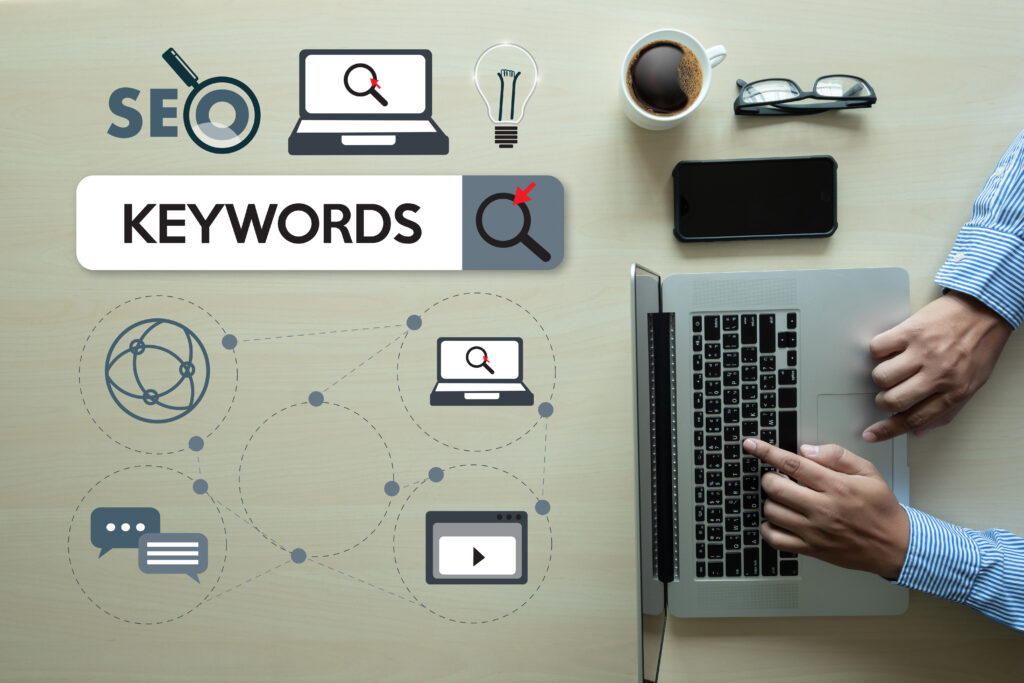Mastering On-Page SEO: Essential Elements Every Webpage Needs
Search engine optimization (SEO) has become a must for websites today. To pop up higher in search results, they must employ strategic SEO techniques. According to a study, the top three Google search results usually receive 54.4% of clicks. That significant number is often the outcome of adequately utilized on-page SEO elements.
Mastering core on-page elements is essential for any website aiming to drive more organic traffic, increase brand awareness, generate leads, and boost revenue. This article will define on-page SEO, explain how it works, and outline the key elements every webpage needs to implement for high search engine rankings.
Understanding on-page SEO
On-page SEO refers to the practice of optimizing individual pages and track rankings in search engines. This is different from off-page SEO, which focuses on website-wide signals like backlinks and domain authority. Effective SEO requires a balanced focus on both on-page and off-page factors.
The content, HTML code, and overall structure of a webpage provide important signals to search engine crawlers about its relevance for specific keyword searches. As these crawlers scan pages, they apply complex proprietary algorithms to analyze on-page elements and determine where to rank pages in search results.
That’s why optimizing title tags, headings, content, image attributes, and other on-page features to target relevant topics and keywords can directly influence search traffic. Effective on-page SEO enables search engines to understand what each page is about and the value it provides for users.
You can optimize your webpage on your own, but if you want to have a complete analysis and custom strategies, it won’t hurt to get some help. Seeking professional SEO assistance, such as Atlanta SEO services or SEO agency in Auckland, New Zealand, can enhance your strategy. On-page optimization, combined with ethical link-building and site-wide performance, is the foundation of any successful SEO strategy.
Essential elements of on-page SEO
- Keyword research and integration
The starting point of on-page SEO is researching and identifying terms and phrases (keywords) that your target audience is likely to search for in engines like Google. Dedicated keyword research tools like Ahrefs, SEMRush, and Google’s own Keyword Planner can surface this data to inform content optimization decisions.
Ideally, you want to find keywords with sufficient search volume and manageable competition. These are long-tail keywords, which are more specific multiword phrases, like ‘content writing services for startups.’ Understand your potential visitors’ search intent by considering their perspective. By targeting appropriately challenging long-tail terms that attract qualified traffic, you can gain more organic visibility than trying to rank for high-competition keywords.
After compiling your list of focus keywords, strategically integrate them into your page’s content, title tags, header tags, image attributes, and URL. The key is to incorporate them in a natural, readable way without over-optimizing or doing what’s called ‘keyword stuffing.’ Two to five percent keyword density is recommended.
- Content quality and structure
Search engines have become adept at analyzing content quality signals to determine rankings. Well-written, informative content that clearly communicates the topic at hand and provides value for readers will fare better than superficial, keyword-stuffed articles. Websites like Help a Reporter Out can be used to gain high-quality backlinks and exposure by providing valuable input to journalists, thereby enhancing content quality indirectly.
Similarly, a clear textual hierarchy using formatted headers and easy-to-scan bullet points makes content more readable. Breaking information down into clear sections also allows search bots to better digest and index page content.
Ensure your page’s main heading defines the topic using your target keyword. Subheadings and paragraphs should also build on that focus. You can use these tips in your SEO reports as well to make the content more readable.
- Title tags and meta descriptions
Properly optimized title tags and meta descriptions can directly influence search click-through rates (CTR). These two appear as clickable headlines and description snippets in search listings.
Title tags should concisely describe the page using selected keywords while maintaining readability. They typically contain 50–60 characters, including spaces. Meta descriptions, on the other hand, summarize page content in 160 characters.
Well-written descriptions incorporating keywords and compelling selling points influence searchers to click instead of competing listings. Just avoid keyword stuffing and using identical title tags and meta descriptions for multiple pages, or they’ll have adverse impacts on the SERP results.
Take this title tag and meta description of a webpage about hiking backpacks, for example:
Title Tag: Beginner’s Guide to Hiking Backpacks: Find Your Perfect Fit
Meta Description: Explore essential factors to consider when choosing a beginner’s hiking backpack. Get tips on comfort, size, and features, and find your perfect fit here.
The sample title tag is only 59 characters long while still describing the main content of the page. Meanwhile, the 154-character meta description contains the keywords also mentioned in the title tag.
When you have a compelling title tag and meta description combination, you can increase the chances of your webpage getting better CTR. Think of these elements as your methods to advertise your page and attract potential readers to visit and stay longer.
- Header tags
Header tags create structure within web content, allowing users and search engines to determine the focus of different sections quickly. The main headline designated by one H1 tag sets the overall topic using a target keyword. Under this header, H2 subheadings delve into major subtopics around that focus. When a section needs more segmentation, H3 tags break information down further.
Proper tagging order is crucial—don’t skip from H1 to H3 without using H2 tags first. Also, keep headings short and descriptive. Concise headings with keywords help search bots understand content sections and keywords in context. Users also scan headings to decide what to read.
- Image optimization
Images should also be optimized for the web through compression and sizing. But also leverage image file names, alt text, and title tags for SEO. Begin by giving images descriptive names using target keywords wherever logical.
The title attribute can share longer descriptions, which appear when hovering over images. In alt text, briefly describe the image content while highlighting keywords. Screen readers play a crucial role for users with visual impairments, making alt text an essential element of web accessibility. Around 91.3% of people use screen readers, especially on mobile devices, to understand the context of an image via the alt text.
Aim for large enough images without excess size bloat, which could affect the load time of the webpage. Images over 1MB could lead to slow loading without substantially improving user experience. Finding the right balance depends on context, but 500KB for JPGs and 800KB for PNGs is often sufficient. Lossless compression removes unnecessary pixel data without affecting perception. This drastically reduces file sizes with no visible quality loss.
Additional considerations for on-page SEO
- Internal linking
An intentional internal linking structure enhances website navigation for visitors looking to explore related content. These internal links also allow crawlers to discover connected pages easily. When linking internally, use anchor text with your target keywords to indicate linked page focus.
Ensure any link you add to your page is still accessible and relevant to the topic. However, avoid putting multiple internal links in one paragraph. Too many links near each other will look unnatural and cluttered.
- Page loading speed
Fast page speed should also be your priority. Users abandon slow-loading sites, which also signals issues to search engines, potentially ranking your page lower.
Aim for page load times under at least three seconds. According to a study, the ideal load time for favorable conversion rates is from zero to four seconds. You can test your webpage’s speed using online tools and optimize the code, servers, and databases as needed.
- Mobile optimization
With more people owning smartphones, it’s no surprise that 58.99% of global website traffic comes from mobile devices. Thus, it’s wise to ensure a responsive, mobile-friendly design for the best experience on smartphones. Leverage browser caching and compression, efficient CSS/JS, and scaled-down image sizes to accelerate the display.
Simplified mobile layouts with expandable menus also prevent excessive scrolling on smaller screens. With Google prioritizing mobile sites, an optimized and responsive experience is essential.
Putting it all together
Now that you know the essential elements your webpage should have, here’s a step-by-step checklist to implement effective on-page SEO:
- Conduct keyword research and select 10–20 keywords aligned with your content focus and audience search intent.
- Optimize page content around your chosen keywords, integrating them naturally without overstuffing.
- Create a compelling SEO-friendly title tag with your primary keyword toward the beginning.
- Craft an engaging meta description that builds interest and incorporates one to two keywords.
- Structure your content using hierarchical header tags while highlighting keywords.
- Add images with optimized file names, compressed sizes, alt text, and title tags reflecting the target keywords.
- Establish internal links across related content to enable site interlinking.
- Check mobile optimization and page speeds to ensure fast load times on all types of devices.
Additional free tools like MozBar or SEMRush’s Page Optimization can help evaluate and improve specific pages after making these key optimizations.
Conclusion
When executed properly, using the best on-page SEO practices makes your webpages more findable, crawler-friendly, and readable for your audience. By optimizing content, HTML tags, and media elements around strategic keywords, you lead search engines directly to your best assets. Combine comprehensive on-page SEO with smart link building and site enhancements for the full traffic-growing impact.


